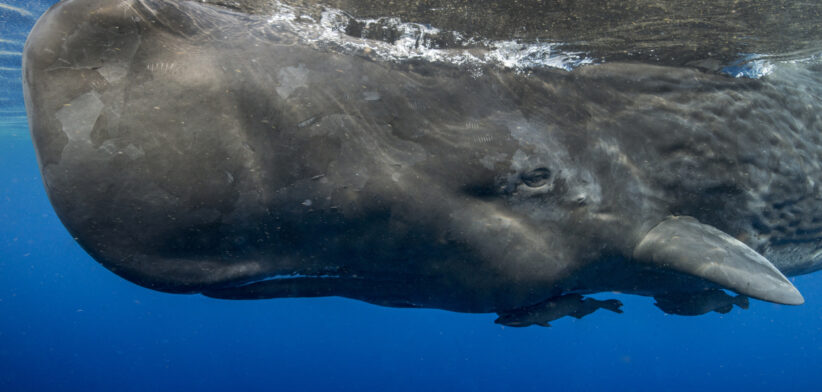Sperm whales are communicating using a “phonetic alphabet” with a human-like level of sophistication.
Researchers from the MIT and Project CETI (Cetacean Translation Initiative) have used algorithms and artificial intelligence to begin to decode and unlock the secrets of whale language.
The findings challenge the traditional notion that complex communication is unique to humans. They also lay the foundations for how humans would communicate if we encountered life on other planets.
Sperm whales have the largest brains among known animals, accompanied by complex social behaviours between families and cultural groups and coordination of food hunting.
The new research on whale language, published in the Nature Communications journal, found that sperm whales used “codas”, or short bursts of clicks to communicate.
These varied significantly in structure depending on the conversational context, “revealing a communication system far more intricate than previously understood”.
“It turned out that sperm whale communications were indeed not random or simplistic, but rather structured in a complex, combinatorial manner,” According to an MIT report on the research findings.
“The researchers identified something of a ‘sperm whale phonetic alphabet,’ where various elements that researchers call rhythm, tempo, rubato, and ornamentation interplay to form a vast array of distinguishable codas.”
The researchers found that individual sperm whales could emit various coda patterns in long exchanges, not just repeats of the same coda.
These patterns were nuanced, and included “fine-grained variations that other whales also produce and recognise.”
This was a “step toward showing that other species have levels of communication complexity that have not been identified so far, deeply connected to behaviour”.
Another intriguing aspect of the research was that it paralleled the approach envisaged for communicating with alien species, if they were ever discovered.
“It’s about understanding a species with a completely different environment and communication protocols, where their interactions are distinctly different from human norms,” research lead author Pratyusha Sharma said.
“Essentially, our work could lay the groundwork for deciphering how an ‘alien civilization’ might communicate, providing insights into creating algorithms or systems to understand entirely unfamiliar forms of communication.”
The full report is Nature website.








